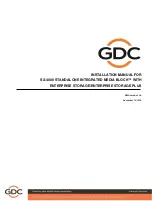
86
Therefore, actual results generally affect recog-
nized expenses and the recorded obligations for
pensions in future periods. While management
believes that the assumptions used are appro-
priate, differences in actual experience or
changes in assumptions may affect Sony’s pen-
sion obligations and future expense.
Sony’s principal pension plans are its Japa-
nese pension plans. Foreign pension plans are
not significant individually with total assets
and pension obligations amounting to less
than 10 percent of those of the aggregate of
the Japanese plans.
Sony used a discount rate of 2.4 percent for
its Japanese pension plans as of March 31,
2004. The discount rate was determined by
using available information about rates of
return on high-quality fixed-income invest-
ments currently available and expected to be
available during the period to maturity of the
pension benefit obligation. The 2.4 percent
discount rate represents a 50 basis point in-
crease from the 1.9 percent discount rate used
for year ended March 31, 2003 and reflects
current market interest rate conditions. For
Japanese plans, a 50 basis point increase in the
discount rate would decrease pension costs by
approximately 12.0 billion yen, compared to
the year ended March 31, 2004.
To determine the expected long-term rate
of return on pension plan assets, Sony consid-
ers the current and expected asset allocations,
as well as historical and expected long-term
rates of return on various categories of plan
assets. For Japanese pension plans, the ex-
pected long-term rate of return on pension
plan assets was 4.0 percent as of March 31,
2003 and 2004. The actual return on pension
plan assets for the year ended March 31, 2004
was 23.0 percent. Consistent with U.S. GAAP,
actual results that differ from the expected re-
turn on plan assets are accumulated and amor-
tized as a component of pension expense over
the average future service period, thereby re-
ducing the year-to-year volatility in pension ex-
pense. At March 31, 2003 and 2004, Sony had
unrecognized actuarial losses of 513.0 billion
yen and 328.5 billion yen, respectively, includ-
ing losses related to plan assets. For the year
ended March 31, 2004, the unrecognized
actuarial loss decreased primarily due to the
improved performance of equity markets.
The unrecognized actuarial losses reflect the
overall unfavorable performance of equity
markets over the past several years and will
result in an increase in pension expense as they
are recognized.
Sony recorded a liability for the unfunded
accumulated benefit obligation for Japanese
pension plans of 308.7 billion yen and 149.4
billion yen as of March 31, 2003 and 2004,
respectively. This liability represents the excess
of the accumulated benefit obligation under
Sony’s qualified defined benefit pension plans
over the fair value of the plans’ assets. In
accordance with U.S. GAAP, this liability was
established by a charge to stockholders’ equity,
resulting in no impact to the accompanying
consolidated statements of income.
The following table illustrates the sensitivity
to a change in the discount rate and the ex-
pected return on pension plan assets, while
holding all other assumptions constant, for
Japanese pension plans as of March 31, 2004:
DEFERRED TAX ASSET VALUATION
Sony records a valuation allowance to reduce
the deferred tax assets to an amount that
management believes is more likely than not
to be realized. In establishing the appropriate
valuation allowance for deferred tax assets
(including deferred tax assets on tax loss carry-
forwards), all available evidence, both positive
and negative, is considered. Information on
historical results is supplemented by all cur-
rently available information on future years, as
realization of deferred tax assets is dependent
on whether each tax-filing unit generates
sufficient taxable income. The estimates and
assumptions used in determining future tax-
able income are consistent with those used in
Sony’s approved forecasts of future operations.
Although realization is not assured, manage-
ment believes it is more likely than not that all
of the deferred tax assets, less valuation allow-
ance, will be realized.
Sony applied to file its corporate income tax
return under the consolidated tax filing system
in Japan beginning with the fiscal year ended
March 31, 2004. Under the consolidated tax
filing system, the tax-filing unit consists of
Sony Corporation, the ultimate parent com-
pany of the Sony Group, and its fully owned
Japanese subsidiaries. The eventual realizability
of the tax benefit of its deferred tax assets is
dependent on whether the tax-filing unit gen-
erates sufficient taxable income in the future.
In addition, Sony is subject to local income taxes
in Japan, in which, the tax-filing unit, for pur-
poses of local income taxes, is on a stand alone
entity basis. The eventual realizability of the tax
benefit of deferred tax assets for local income
taxes is dependent on whether Sony Corpora-
tion and each subsidiary generates sufficient
taxable income in future. As of March 31, 2004,
Sony Corporation had deferred tax assets for
local income taxes totaling 86.5 billion yen.
The eventual realizability of the tax benefit of
its deferred tax assets is dependent on whether
Sony Corporation generates sufficient taxable
income in the future. Management believes
that Sony Corporation’s historical results,
when evaluated in connection with relevant
qualitative factors and available information
concerning its business and industry, provided
substantial positive evidence, which outweighs
the negative evidence available. However, un-
CHANGE IN ASSUMPTION
Pre-Tax
Pension
Equity
(Yen in billions)
PBO
Expense
(Net of Tax)
25 basis point increase/decrease in discount rate . . . . . . . . . . . . . .
–/+50.0
–/+6.0
+/–3.4
25 basis point increase/decrease in expected return on assets . . . . .
–
–/+1.0
+/–0.6
















































